Peter Dornauf – 12 October, 2011
Hamilton
Group show
Handmade Pixels: Exposing the Animation Process
Curated by Lisa Perrott
1 October - 30 October 2011
Animation. It’s the poor man’s movies. And woman’s too, if a current show at the Calder and Lawson Gallery, (Gallagher Academy of Performing Arts, University of Waikato) is anything to go by. Curated by Lisa Perrott, Senior Lecturer in Screen and Media Studies at the University of Waikato and herself a contributor; of the eleven artists represented, half are women.
Handmade Pixels: Exposing the Animation Process, covers a wide cross-section of styles and techniques in this medium, beginning with the New Zealand grand master himself, Len Lye whose first scratched and painted reels were shown to the London Film Society in the late twenties. On display are not only the films themselves, but happily the puppets, props, working drawings and still images from each of artist’s creation. In Lye’s case we have the tools he utilized, comb, shaving blade and stencils, used in his direct animation method and some of the notes he scribbled for himself on paper.
Tusalava, (1927-29) his first work, (an abstract presentation of some cellular activity) is available for viewing on screen, reminding one of its sheer audacity and inventiveness allied to that very New Zealand number 8 wire, DIY quality. It probably made people like Man Ray kick themselves for not coming up with the idea first. The later, Swing the Lambeth Walk, 1939 (inspired by the 1930’s song, Me And My Girl) is also included and viewing its animated pointillism, Paul Klee’s comment about talking a line for a walk, or in this case, a dance, comes easily to mind. Its colour and exuberance certainly make it a precursor to Op Art.
Opposite Lye on the gallery wall are the props from the work of Lonnie Hutchison, black paper cut-outs, silhouettes of trees, birds, and taniwha’s, which were subsequently photographed and then animated digitally to create the film, Shangri La, (2011). Chews Lane, Wellington, was used as a backdrop in order to present the areas pre-European history, superimposing the silhouettes on top of the urban setting. The effect of evocative music together with swaying trees juxtaposed against a modern concrete cityscape is powerfully haunting.
Gregory Bennett’s work, Utopia, 2011, is completely digitally generated, presenting a group of identical male nudes, blue in hue (think the feminoid robot in Fritz Lang’s, Metropolis) moving machine-like across and around a series of cubes and stairs that vaguely recall the work of Escher. The choreography of the males, marching in a kind of ballet of military precision to drum beats, is ambiguously sinister and yet strangely beautiful. At times they morph together into flower-like formations that trigger associations with those thirty Hollywood dance extravagances, Busby Berkeley’s Footlight Parade, and at other times resemble cogs and wheels. It’s a twilight world, clinically clean, resembling a well swept moonscape where all the trees are leafless, yet plots of long lawn grass allow the occupants to bathe and luxuriate in. All the while the hypnotic and frenetic dance continues. Utopia meets dystopia in the twenty first century.
Swing, by Dawn Tuffery, 2008, employs a stop-motion process using latex puppets and a handmade set. This work was part of her postgraduate study at Waikato Wintec and again like Bennett and Hutchison, the animation explores themes linked to the survival of the species. Her elf-like Hobbit creatures (resembling an Upritchard figurine), inhabit a primitive Tolkien forest that’s under threat.
A further permutation on the subject is the work of Miriam Harris and Juliet Palmer. Their film, Soaring, Roaring, Diving, 2008, is a real hybrid, incorporating a clever mixed bag of hand drawn material together with Super 8 footage and 2D and 3D imagery. The whole piece delicately evokes memory and a lost childhood past which is captured exquisitely by juxtaposing and superimposing cartoons, childhood drawings, abstract scribbles and live footage together.
Rowan Wernham and James Robinson go deliberately, even perversely low tech with a budget Sci Fi production, (X.O. Genesis, 2010) a kind of paper mashie Star Wars on strings with the help of original music by Chris Knox.
A Len Lye look alike comes in the form of Traum a Dream, by Dirk de Bruyn who does the direct process bit, using marker pens and letraset as a adjunct to Lye’s collection of tricks. It’s a visual overload, as if your television set was snowing colour, behind which are audible but indecipherable cries, shouts and whispers, and, according to the notes, bits of a Michael Jackson song.
The sinister is ratcheted up a couple of knots in Death of an Orchestra, by Emit Snake-beings. Obviously this man takes his work seriously and his stop-motion process employing reconstructed dolls, one of which looks like a cross between Medusa and the Hindu god Ganesha, comes across as something out of a Greek tragedy, complete with wails and dirge. It all ends badly.
At the charming end, but not without a touch of the social conscience, is the work of Jo Williams. In Recent Date, 2007, her puppets, winsomely presented, (composed of stainless steel ball and socket joints encased in foam latex), play out a little drama that will have you reaching for your hankies. It’s bag lady meets comb-over cleaner of tall buildings, sleeping rough and sharing food beneath the afore mentioned structures.
Artist and curator of the exhibition, Lisa Perrott in collaboration with Amanda Ewing, construct in animaScope, (1997-2009) a surreal tale of power and surveillance that takes its cue from French philosopher, Michel Foucault. Their puppet/dictator, ‘Rat Man’, is superbly crafted, (clay-fired head and wire body covered in wax and fabric) capturing all the menacing demeanour of a humanimal oppressor, complete with oversized hands, key in the back and a small tail. The dungeon setting where his human captives are held, are, in an interesting twist, fed real raw meat. As in all of these animations, no actual dialogue takes place, the sound tracts being made up of music or noise of various kinds, in Perrott and Ewing’s case, an eerie sound that resembles wind.
The show completes itself with a nod to history that takes animation back to its roots in the first ever film of this kind to be made. Borrowing from the 1908 earliest recorded cartoon film by French artist Emile Cohl, Fantasmagorie, Belgian creator, Rastko Ciric does a 3-D retake of the original and computer generates an updated (2008) equivalent character who plays off creatively against the hand drawn figure from the earlier production. It ends beautifully with them both riding off, as in all good movies, pillion style, into the sunset, on a futuristic rocket mobile.
This is a gem of a show, intriguing, instructive, seductive and entertaining by turns. Animation is alive and well in New Zealand.
Peter Dornauf
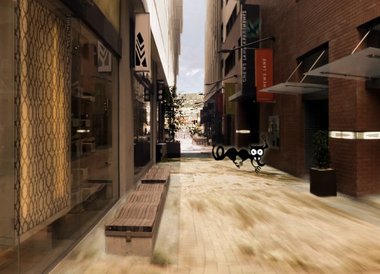
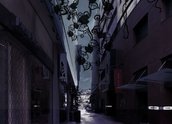
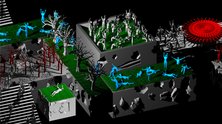
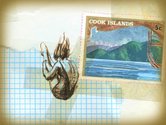
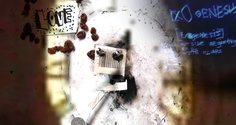
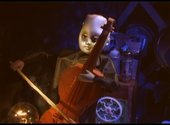

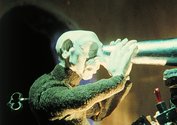
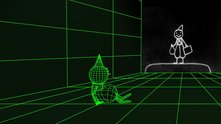
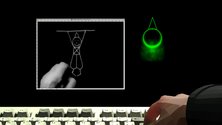
 Advertising in this column
Advertising in this column Two Rooms presents a program of residencies and projects
Two Rooms presents a program of residencies and projects



This Discussion has 0 comments.
Comment
Participate
Register to Participate.
Sign in
Sign in to an existing account.